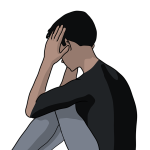10 Strategies For Surviving Antidepressant Withdrawal (Success Stories)

Antidepressant withdrawal, also known as discontinuation syndrome, refers to a set of symptoms that can occur when an individual reduces or stops taking antidepressant medications. Although not everyone experiences withdrawal symptoms, they can range from mild to severe and may significantly impact a person’s well-being during the tapering process. Understanding the intricacies of antidepressant withdrawal is crucial for individuals considering discontinuation or for those who are currently navigating this challenging journey.
Antidepressant withdrawal occurs due to changes in brain chemistry and neurotransmitter levels that have been altered by long-term medication use. The severity and duration of withdrawal symptoms can vary based on factors such as the specific medication, dosage, and duration of use. Withdrawal symptoms typically begin within days to weeks after the dose reduction or discontinuation of the medication.
The experience of antidepressant withdrawal can vary greatly from person to person. Factors such as medication type, dosage, individual physiology, and the presence of co-occurring mental health conditions can influence the severity and duration of withdrawal symptoms. It is crucial to approach withdrawal with patience and an individualized approach, guided by a healthcare professional.
Antidepressant Withdrawal symptoms
Antidepressant withdrawal symptoms can vary widely from person to person and depend on factors such as the specific medication, dosage, duration of use, and individual physiology. These symptoms typically occur when the dosage of an antidepressant is reduced or the medication is discontinued. Here are some common antidepressant withdrawal symptoms:
1. Flu-like symptoms: Individuals may experience flu-like symptoms such as headaches, body aches, joint pain, chills, and sweating.
2. Dizziness and vertigo: Many people report feelings of dizziness, lightheadedness, or a spinning sensation (vertigo) during withdrawal.
3. Gastrointestinal disturbances: Nausea, vomiting, diarrhea, and stomach cramps are common withdrawal symptoms associated with antidepressants.
4. Sleep disturbances: Insomnia, vivid dreams, nightmares, or changes in sleep patterns may occur during withdrawal.
5. Mood swings: Individuals may experience mood swings, including irritability, anxiety, agitation, or episodes of crying. Some individuals may also experience heightened emotions or emotional numbness.
6. Cognitive symptoms: Difficulty concentrating, memory problems, confusion, and brain fog are reported by some individuals during antidepressant withdrawal.
7. Sensory disturbances: Some people may experience sensations such as tingling, electric shock-like sensations (often called “brain zaps”), or a feeling of being off-balance.
8. Emotional symptoms: Depression, anxiety, or a worsening of pre-existing mental health conditions can occur during withdrawal.
It’s important to note that not everyone will experience all of these symptoms, and the intensity and duration of symptoms can vary. Withdrawal symptoms can be distressing, but they are generally temporary and gradually improve over time as the body adjusts to the changes in medication.
Discontinuation Syndrome vs. Recurrence of Depression
It is essential to differentiate between discontinuation syndrome and a recurrence of the underlying depressive symptoms. Discontinuation syndrome tends to be time-limited and associated with specific withdrawal symptoms, while a depression relapse typically involves a return or worsening of depressive symptoms.
Strategies For Surviving Antidepressant Withdrawal
Antidepressant withdrawal can be a challenging and uncomfortable experience. However, there are some strategies that individuals can use to help manage their symptoms and successfully navigate the process of discontinuing antidepressant medications. Here are ten key strategies for surviving antidepressant withdrawal:
1. Consult with a healthcare professional: Before beginning the process of discontinuing antidepressant medication, it is important to consult with a healthcare professional. They can help develop a tapering plan that is tailored to the individual’s specific needs, monitor withdrawal symptoms, and make any necessary adjustments.
2. Taper slowly: Gradual tapering is recommended to minimize withdrawal symptoms. This involves slowly reducing the dosage over a period of weeks or months, allowing the body to adjust to the decreasing levels of medication. Abruptly stopping antidepressants can increase the likelihood and intensity of withdrawal symptoms.
3. Practice self-care: Engaging in self-care practices can help manage withdrawal symptoms. Regular exercise, maintaining a healthy diet, prioritizing good sleep hygiene, and reducing stress through relaxation techniques like meditation or yoga can contribute to overall well-being and support the body during the withdrawal process.
4. Stay hydrated: Drinking plenty of water can help reduce physical symptoms such as headaches, nausea, and dizziness that can occur during antidepressant withdrawal.
5. Avoid caffeine and alcohol: Stimulants such as caffeine and alcohol can worsen withdrawal symptoms. Avoiding or reducing the consumption of these substances can help ease the withdrawal process.
6. Seek support: Joining a support group or speaking with a therapist can provide additional emotional support, validation, and coping strategies during the withdrawal process.
7. Monitor symptoms: Keep a journal of symptoms and their severity to help track progress and identify patterns. This information can be shared with a healthcare professional to help guide the tapering process.
8. Practice stress reduction: High levels of stress can exacerbate withdrawal symptoms. Practicing stress reduction techniques like mindfulness, deep breathing, or progressive muscle relaxation can help manage symptoms and promote relaxation.
9. Consider supplements: Some individuals find that supplements such as omega-3 fatty acids, magnesium, or vitamin D can help manage withdrawal symptoms. However, it is important to consult with a healthcare professional before starting any new supplement regimen.
10. Be patient and persistent: Antidepressant withdrawal can be a challenging and unpredictable journey. It is important to approach it with patience and persistence and to recognize that symptoms may take time to improve. With the right support and self-care practices, it is possible to successfully navigate the process of discontinuing antidepressant medications.
What is the healing time for surviving antidepressants?
The healing time for individuals who have discontinued antidepressants can vary significantly. The duration of healing depends on various factors, including the specific antidepressant medication, the dosage and duration of use, individual physiology, and the presence of any underlying mental health conditions. It’s important to note that healing from antidepressant withdrawal is a gradual process and differs from person to person. Here are a few factors that can influence the healing time:
1. Tapering duration: The speed at which an individual tapers off antidepressants can impact the healing time. Gradual tapering over an extended period is generally recommended to minimize withdrawal symptoms and allow the body to adjust slowly.
2. Individual response: Each person’s physiology and mental health history are unique. Some individuals may experience minimal withdrawal symptoms and have a shorter healing time, while others may have more severe symptoms that take longer to resolve.
3. Medication type: Different classes of antidepressants have varying half-lives and withdrawal profiles. Some medications may result in more protracted withdrawal symptoms, potentially extending the healing time.
4. Support and self-care practices: The healing process can be facilitated by engaging in self-care practices such as regular exercise, maintaining a healthy diet, managing stress, seeking therapy or support groups, and practicing stress reduction techniques. These strategies can contribute to overall well-being and potentially shorten the healing time.
It’s important to remember that healing from antidepressant withdrawal is a highly individualized process, and there is no fixed timeline. While some individuals may experience relief from withdrawal symptoms within a few weeks, others may take several months or longer to fully recover. It’s crucial to work closely with a healthcare professional who can provide guidance, monitor symptoms, and make any necessary adjustments to the treatment plan. If you are concerned about the duration of your healing process, it’s always best to consult with a healthcare professional to discuss your specific situation.
Surviving Antidepressants Success Stories
Surviving antidepressant success stories are personal accounts of individuals who have navigated the challenges of antidepressant withdrawal and have achieved a positive outcome. These stories can provide hope, inspiration, and insights into the experiences of others.
I want to share the inspiring story of Sarah (name changed for privacy), who successfully navigated the challenges of antidepressant withdrawal and emerged stronger, reclaiming her life and finding new hope.
Sarah had been prescribed antidepressants to manage her depressive symptoms, and while they provided some relief, she decided it was time to discontinue them. With the guidance of her compassionate psychiatrist, she embarked on a carefully planned tapering schedule, knowing that the road ahead might be difficult.
As she began to lower her dosage, Sarah experienced a range of withdrawal symptoms. Initially, she faced physical discomfort, including headaches, nausea, and fatigue. Emotional turbulence followed, with intense mood swings, heightened anxiety, and occasional moments of despair. Doubt occasionally crept in, but Sarah remained determined, drawing strength from her support system.
Throughout her journey, Sarah found solace in her therapist, who provided a safe space for her to process her emotions and explore coping strategies. In addition, she joined an online support group where she connected with others going through similar experiences. Sharing stories, insights, and encouragement, she realized that she was not alone in her struggle.
Sarah adopted a holistic approach to self-care. She prioritized regular exercise, discovering the therapeutic benefits of yoga and nature walks. She practiced mindfulness meditation, which helped her observe her thoughts without judgment and cultivate a sense of inner peace. Nurturing her body with nutritious meals and sufficient sleep became essential components of her healing process.
As the months passed, Sarah began noticing positive changes. The withdrawal symptoms gradually lessened in intensity and frequency. She experienced moments of clarity and emotional stability that she hadn’t felt in a long time. Sarah felt a renewed sense of self and purpose as she reconnected with her passions and rediscovered her creativity.
With each passing day, Sarah’s resilience grew stronger. She developed coping mechanisms to manage any lingering symptoms that arose, such as engaging in deep breathing exercises during moments of anxiety or seeking support from her loved ones during difficult times. She learned to embrace patience and trust the healing process, celebrating even the smallest victories along the way.
Today, Sarah stands tall, a testament to the power of perseverance and self-discovery. She no longer relies on antidepressants to find happiness and stability. While her journey was challenging, it taught her valuable lessons about her inner strength and the importance of self-care. Sarah’s story serves as a beacon of hope for others embarking on their own journey of antidepressant withdrawal, reminding them that healing is possible and that a brighter future awaits.





